When you think about the word “Antique” there’s a chance that a variety of different antique objects or characteristics may pop into your head. Something doesn’t necessarily have to be entirely ancient in order to be considered antique, but odds are that these things will be on the older side.
Contents
Something that may not be considered common knowledge to people who don’t know much about rocking chairs is that there is quite a variety of different types of rocking chairs. When I think of them, the first thing that I imagine is a Boston Rocker, however, this is only one of several types that gained most of its popularity within a 60-year range in the 1800s.
The first rocking chair you imagine may be a different kind entirely, but the age is one of the first things that should be looked at when determining the value of an antique rocking chair.
If you own or are looking to add an antique rocking chair to your space, you should know exactly what it is that you’re looking at and how antique it really is.
What type of rocking chair is it?
Bentwood Rocking Chair
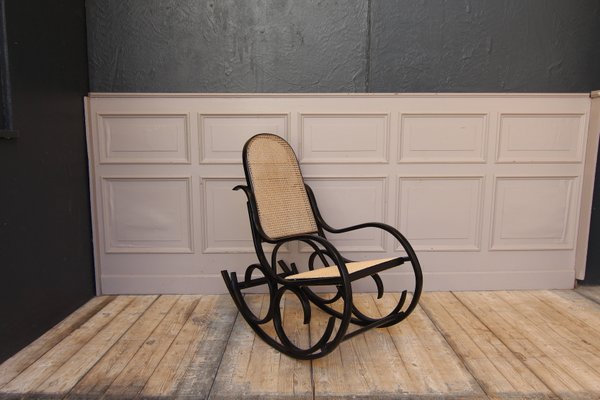
Although this design is from the mid-1800s, it remains popular among some today. Being that these chairs are still being made and hold onto a portion of their popularity, the price isn’t all that high and is usually within a reasonable range of $100 to $250 so long as the condition is up to par.
Made of wood from beech trees, it naturally possesses a reddish hue, but due to the light colouration of the wood, it can be easy to stain for a different look. The design of these chairs consists of many curves and delicate spirals. With a relatively versatile look, this chair can be a nice warm touch to any room.
Boston Rocking Chair
The aforementioned Boston Rocking Chair might also be what you imagine when the image is triggered in your mind, but why is that? This chair was able to pick up a significant amount of its popularity between the years 1830 and 1890. The value of this chair can fall anywhere within the range of $250 to $750.
Unlike the Bentwood Rocker, this chair is made up of two popular wood types for the time period: oak and pine. These chairs occasionally featured embellishments of fruit and flowers that were stencilled in. This chair was as popular as it was because it seemed to be the perfect blend of sitting still and remaining in motion. This chair was easily distinguished from others in part due to its headrest.
Folding Rocking Chair
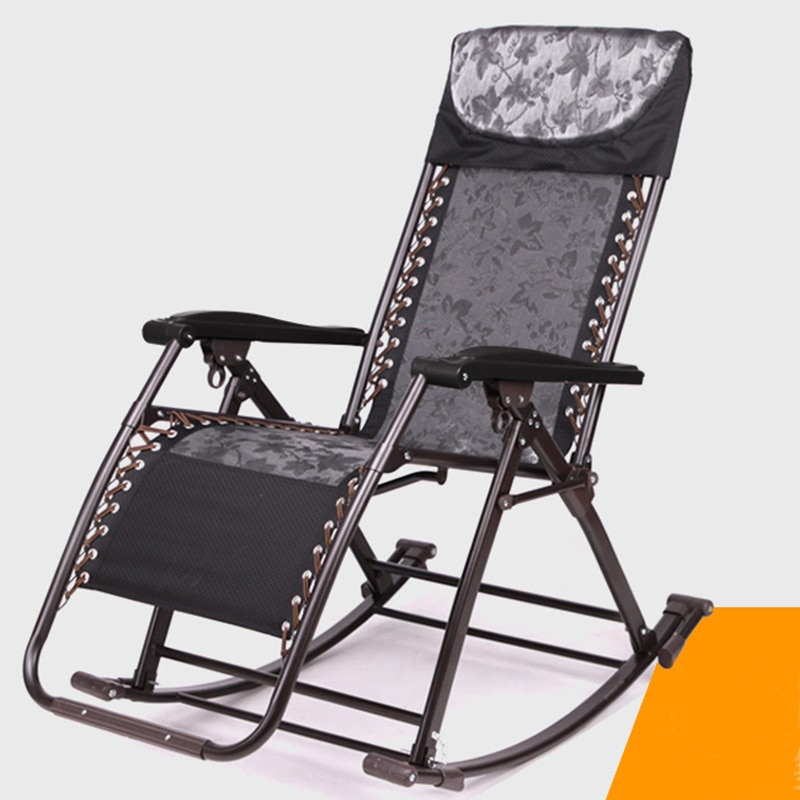
Popular in the 1870s, this chair was able to draw people in with the convenience that it could be folded up and stored. Today, you can expect to spend somewhere within the range of $100 to $200 for chairs of this type that are still of quality despite their age.
Gungstol Rocking Chair
The Gungstol Rocking Chair is a rather unique design that is rather difficult to find today. This specific chair is easy to distinguish due to the three legs on either side of the chair. Although it was thought to be out of the norm, this feature aided in the assembly of the chair and sped up the process.
Being that it is somewhat both difficult to find and from the mid-1700s, these chairs can cost you anywhere from $225, this being quite low for these chairs, to around $400. That being said, some have documented paying as much as more than double the high end of that range.
Jenny Lind Children’s Rocking Chair
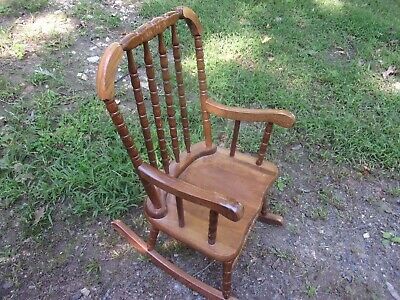
Although there may not be much that is special about these chairs, due to their rather basic shape and build, it’s important to note that rocking chairs are frequently associated with children, elders, and those who aren’t entirely able-bodied. These chairs are simple and it’s encouraged that you spend around $100 at most for this chair.
Ladderback Rocking Chair
These rocking chairs feature a rather narrow back, which just so happens to look like a ladder. These have a fairly thin frame and are known for having horizontal slats across the back rather than the commonly seen vertical slats.
The taller back that this chair possesses also helps distinguish it from others and even identifies it specifically as a ladderback. Based on the age and style of this chair, along with the obvious condition that the chair is in, the value can vary.
Mission Style Rocking Chair
The Mission Style Rocking Chair has a simple shape and frame without the intricate curves and designs. It also features a seat that is upholstered in leather and looks awfully comfortable. The price of these chairs falls on the higher end of the scale and you can expect to spend around $500 or more based on the chair.
Platform Rocking Chair
The Platform Rocker provides a sense of stability that the other rocking chairs may not offer. Rather than the base that is on the ground moving and rocking, the base remains flat on the ground and the chair itself can rock independently. Considering that this chair solved several issues that were an annoyance more than true problems, the estimated $125 to $275 doesn’t seem wildly unreasonable.
Pressed Back Rocking Chair
This specific chair features a distinctive back with raised wood. This design represents a colonial style from the 1870s to the 1920s. Varying based on the presence of distinctive features, some of these chairs can be found priced at around $400.
Sewing Rocking Chair

This rocking chair has a reputation of its own and can be in part due to the fact that the size of it is between an adult-sized chair and a child-sized chair. These chairs don’t have the armrests on the sides that other chairs may feature. You may also see these chairs going by the name “nurse rocker” or the name “slipper rocking chair”.
Wicker Rocking Chair
These rocking chairs, frequently featured in outdoor furniture have stayed present since ancient Roman times. The intricate design of these chairs helped Victoria's designers figure out what they could do with their synthetic fibres, rather than letting them go to waste. These chairs are understandably on the more expensive side, costing over $300, again, based on their physical appearance and features.
Windsor Rocking Chair
Being that there are so many different characteristics to these chairs, the price has not been something that can be easily pinpointed. Although they may have started in one area, with one look, as time went on, multiple manufacturers continued to introduce varying versions that expanded the options and helped contribute to the uncertainty.
What is the origin of the chair?
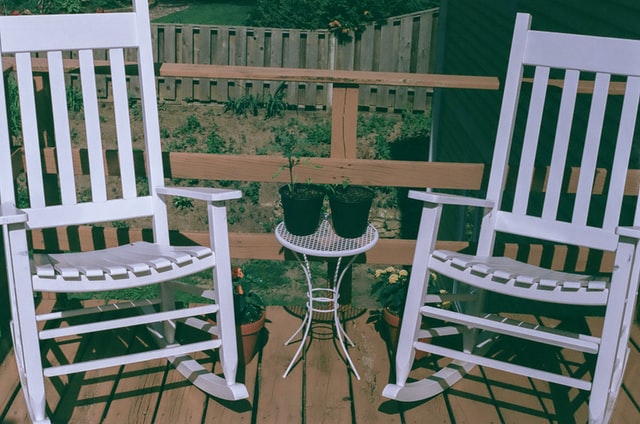
The two most popular origins of rocking chairs are of an English or an American design, but there are also chairs that are of German design. If you know the distinctive characteristics of each, it’ll help you identify when the chair was made, as well as what you can expect of the chair.
From the 1780s to early on in the 1800s, American rocking chairs were being produced. Lightweight models were being produced and featured a significant number of straight lines in the body of the chair and some smaller designs and details.
Jumping forward to the 1920s, British rocking chairs hit the market as a similar version of the American rocking chairs. The main differences between the two were that the British chairs were slightly heavier, and there was a Curvilinear frame.
Back in 1860, Germany was looking to make chairs that were highly functional and would meet the wants and needs of customers. Again, this class got heavier, but with the increase in weight, there is also an increase in durability. These chairs also have pads for the armrests and rocking feet.
What type of wood is the chair made out of?

Depending on the type of wood that was used to create the specific rocking chair that you have in mind, the care for it, along with your overall desire to buy it, may vary. While some wood types are more tolerant of getting banged up, there are others that have been known to be more high maintenance and less capable of handling great amounts of use.
Walnut was one of three popular types of wood used in the 1700s, but it is the only one of the three that didn’t work its way into other centuries.
Mahogany is another one of those three that was frequently used in the 1700s, but the usage continued well into the late 1800s.
Oak was the last of the three types of wood that was frequently used in the 1700s. Even more impressive than the prolonged use of Mahogany, Oak was used well into the early 1900s.
Cherry wood and Maple wood were both used frequently in the early 1800s.
Finally, Rosewood was used frequently around the same time that Mahogany started to fade out, in the late 1800s.
These popular types of wood for these time periods didn’t just apply to rocking chairs but proved to be relevant and favoured for most of the time period mentioned above.
Was the chair made by hand or by a machine?
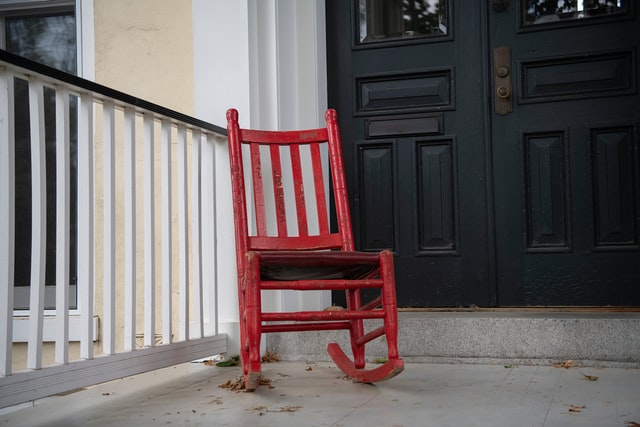
For this aspect, keep in mind that machines are used to create perfect replicas of the same product. Human error can not only prove if your rocking chair is authentically antique, but it can also add to the value of the chair. Some of the manufacturers from that specific time period may have marked their creations differently.
Knowing the manufacturer can also contribute to the value of the chair. These markings can be anything from a mark that was burned or carved into the wood, to a piece of material secured to the underside of the chair’s seat. Knowing a little bit about the manufacturers from the time period that you’re looking for can be beneficial in determining the authenticity of the chair.
There’s also a chance that the chair won’t have such a distinguishable mark, but it’ll be more of a trademark that can be found in either the design or the details of the chair. Being able to recognize and pinpoint what it is that sets a chair aside from the others is a valuable skill that you will find incredibly useful in this instance.
What is the chair held together with?

Although screws and nails may seem simple and as if they have remained the same since the very beginning of their creation and usage, that is not the case.
Handmade nails have been around for a very long time, way beyond the creation of rocking chairs. However, handcrafted screws were created in the 1700s by heating nails and creating grooves and threads.
Looking forward to the middle of the 1800s, the threading of screws became more consistent, but a hacksaw cut was necessary for use. These screws were referred to as partially machined screws.
Finally, there were machine-produced screws, which is what a lot of us are familiar with today. These screws had the consistency and uniformity that we expect from the small pieces of metal today, and they were able to stand the test of time more so than before.
Conclusion

While rocking chairs have been around for hundreds of years at this point, there’s a chance that a lot of people are unaware of the history behind them. From the design of the chair to the wood used to make it all the way to the methods that are used to hold the chair together, these factors can all help you pinpoint the age of the chair.
Suppose you’re looking for an antique chair specifically for its age and its history of it. In that case, your target purchases will likely be very different than if you were simply looking for a rocking chair that fits your space and went with the décor that you already have. The character that an antique rocking chair can bring to any space is widely varied and can fit your personal preference.




